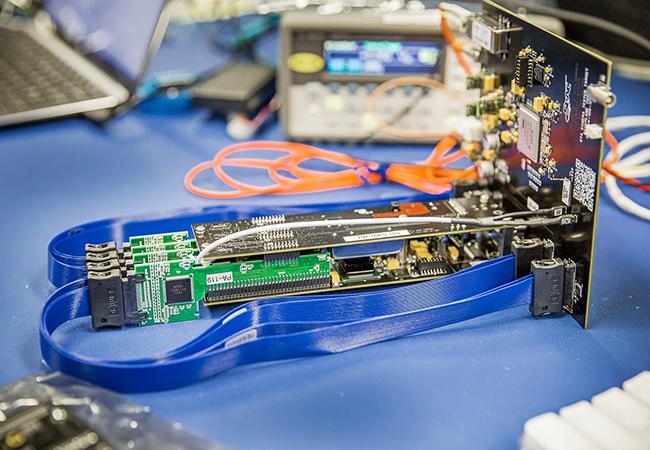
Scientists at the SLAC National Accelerator Laboratory, in Menlo Park, California, are currently building and testing unique components designed to collect the smallest traces of light in the sky. The end-result of this extensive research will be an innovative camera meant to complement a telescope capable of measuring wide-ranging gamma-rays.
The CTA will be able to detect ultra-high energy electromagnetic radiation, also known as gamma-rays. This radiation is so powerful that it breaks into small particles over our atmosphere faster than the speed of light, which necessitates the development of a specialized type of camera called the Compact High-energy Camera (CHEC); current CCD-based cameras in observatories are nowhere fast enough. The CHEC would be stronger than the Fermi Gamma-ray Space Telescope that’s currently in orbit, and allow scientists to capture the faintest, fastest flashes of light in the night sky. As light is one thing scientists use to search for faraway objects in space, the CHEC’s development could aid in space exploration.
According to SLAC, the CHEC camera will consist of several electronic components including photomultipliers, which are tiny modules able to collect and amplify individual particles of light. Another component is the TARGET chip, created by the combined efforts of University of Hawaii and SLAC researchers. The TARGET chip is an integral circuit chip that is able to read 16 pixels of photomultiplier signals up to one billion times a second.
Luigi Tibaldo, a researcher working on the CHEC project, said the prototype camera would utilize 32 different modules with 64-bit photomultipliers in addition to four TARGET chips. University of Hawaii researchers are currently working alongside Japanese electronics firm Hamamatsu Photonics in an effort to mass-produce the necessary modules for the new camera and telescope array.

SLAC seeks to install the first CHEC into a prototype telescope that will be used in the Cherenkov Telescope Array (CTA), a ground-based open observatory still under development by a consortium of more than a thousand members from countries such as Japan, Germany, India, the U.S., and others. The observatory will actually be comprise of two separate arrays, one in the Northern Hemisphere and the other in the Southern Hemisphere. There will be a total of more than 100 telescopes of three different sizes.
Researchers are set to continue testing the modules throughout the month of April before installing them into the final assembly of the CHEC camera. The CTA telescopes are currently in development.
(Via Phys.org)
Editors' Recommendations
- This modular 360 camera converts into a high-end Leica-backed action cam
- First-ever image of a black hole wins scientists a $3-million prize


